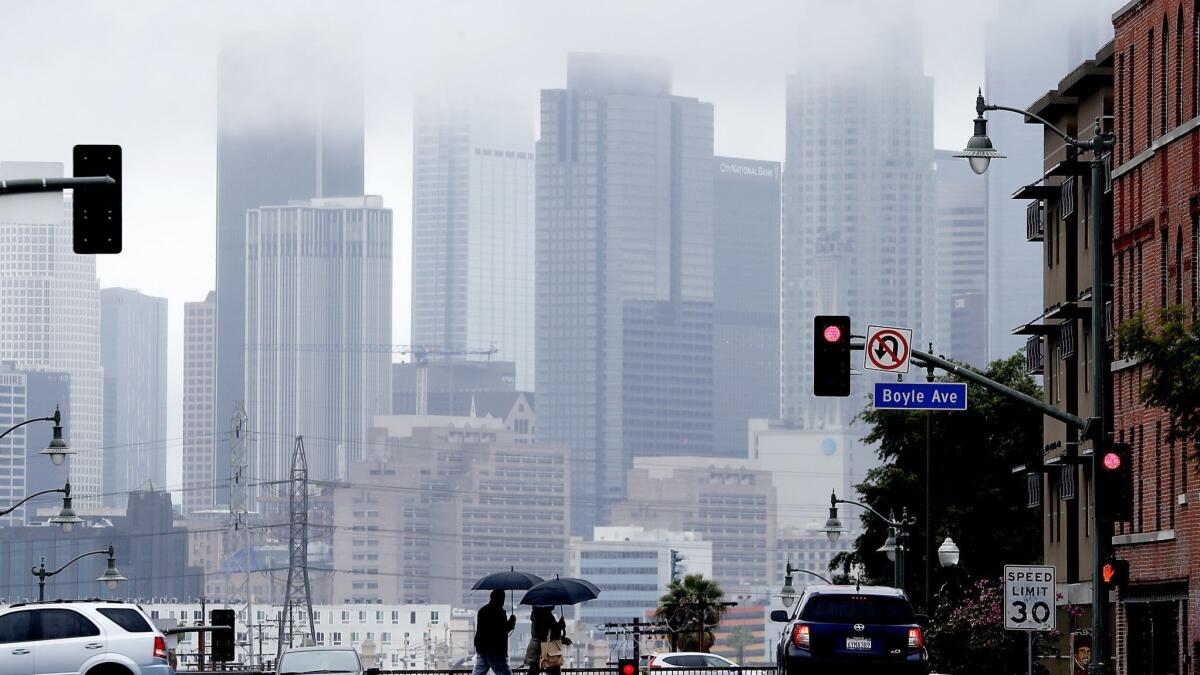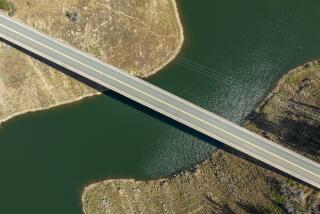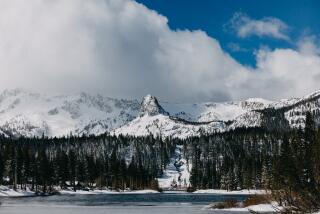Must Reads: California is drought-free for the first time in nearly a decade

- Share via
It’s official: California is 100% drought-free.
For the first time since 2011, the state shows no areas suffering from prolonged drought and illustrates almost entirely normal conditions, according to a map released Thursday by the U.S. Drought Monitor.
Former Gov. Jerry Brown issued an executive order in 2017 that lifted the drought emergency in most of the state, leaving some breathing a sigh of relief. But he cautioned Californians to keep saving water as some parts of the state were still suffering from extreme drought.
Now, two years later, that deficit seems to have been erased, thanks to an exceptionally wet winter.
“The reservoirs are full, lakes are full, the streams are flowing, there’s tons of snow,” said Jessica Blunden, a climate scientist with the National Climatic Data Center at the National Oceanic and Atmospheric Administration. “All the drought is officially gone.”
The Drought Monitor, which collects data from scientists from the National Drought Mitigation Center, the U.S. Department of Agriculture and dozens of weather agencies, last showed a drought map that was clear in December 2011.
In updating the map, scientists consult with hydrologists, water managers, meteorologists and other experts to determine the amount of water in the state’s reservoirs, the snowpack level and other key measurements. With the wet winter streak going strong, their reports have been good.
In January, storms filled up many of the state’s water reserves almost to capacity and added about 580 billion gallons of water to reservoirs across the state. That month, the snowpack in the Sierra Nevada, a major source of California’s water supply, doubled — and then doubled again in February.
“California has been getting a tremendous amount of rain, storms and snow,” Blunden said. “It’s just been extremely wet and it’s been so wet … that we’ve been able to alleviate drought across the state.”
A year ago, just 11% of the state was experiencing normal conditions while 88.9% of the state was “abnormally dry,” according to the drought report. Some parts of Los Angeles and Ventura counties were still colored dark red, meaning they were experiencing “extreme drought.”
Even last week, a small portion of Northern California was labeled as having “moderate drought” conditions. But as of Thursday, 93% of the state was experiencing normal conditions and none of it was in drought, Blunden said.
Small portions in the far northern and southern parts of the state were still marked as “abnormally dry,” but elsewhere, the map registered no drought conditions at all. In San Diego County, reservoirs were only 65% full, which contributed to the dry conditions in that area, Blunden said.
And conditions are expected to return to normal next week in Northern California, she said. With another storm expected within a week in San Diego, that area also would likely come out of its dry spell entirely.
After a cold winter in Southern California, the Santa Ana winds are returning, while a high pressure system will help raise the temperatures, said Jimmy Taeger, a meteorologist with the National Weather Service.
The winter chill set records in downtown Los Angeles, which recorded its coldest February in nearly 60 years. There had never been a February since July 1877, when record-keeping began in downtown L.A., that the temperature failed to reach the 70-degree mark.
In contrast, the highs for this weekend in the Los Angeles area are expected to hit 78. In San Diego, the mercury could reach 75 degrees Sunday for the first time since late January.
The warm weather is rolling into the region on strong winds. In Los Angeles, the weather service issued a wind advisory Thursday morning, noting that winds between 15 and 25 mph would roll through, with gusts up to 40 mph from Malibu to the Hollywood Hills.
Temperatures might be creeping up, but as for the rain, Taeger said “we’re not completely over with it yet.”
Offshore winds will subside, bringing a 40% chance of a storm coming through San Diego over Wednesday and Thursday. Next weekend will bring more warm temperatures, but another storm could materialize toward the end of March, forecasters said.
The rainy trend has extended across the United States, making for vast improvements in drought conditions, especially in the Western part of the country. Colorado, New Mexico and Wyoming, for example, have made significant progress, though much of those states are still classified as abnormally dry and are still experiencing drought conditions, Blunden said.
But storms are raging in some areas. A blizzard is moving over Colorado and Arizona, and New Mexico on Wednesday had heavy thunderstorms, which could significantly alleviate drought conditions in the next few weeks.
Californians have a lot to be happy about, she said, but Blunden warned that could change.
“Dry conditions can easily creep back in,” she said. “That’s why we adjust the map every week. The conditions change — and they can change fast sometimes.”
Brown’s declaration was made after record rainfall in 2017. Then, in 2018, the state broke more records following an extremely dry winter.
“We did see such major drought for five years,” Blunden said. “All of these storms came along and alleviated the drought. Everybody thought we were out of the woods, but then it came right back.
“I think drought conditions can sneak up on you very quickly. It is good to be cautious and always think about conserving water.”
Twitter: @r_valejandra
More to Read
Sign up for Essential California
The most important California stories and recommendations in your inbox every morning.
You may occasionally receive promotional content from the Los Angeles Times.











